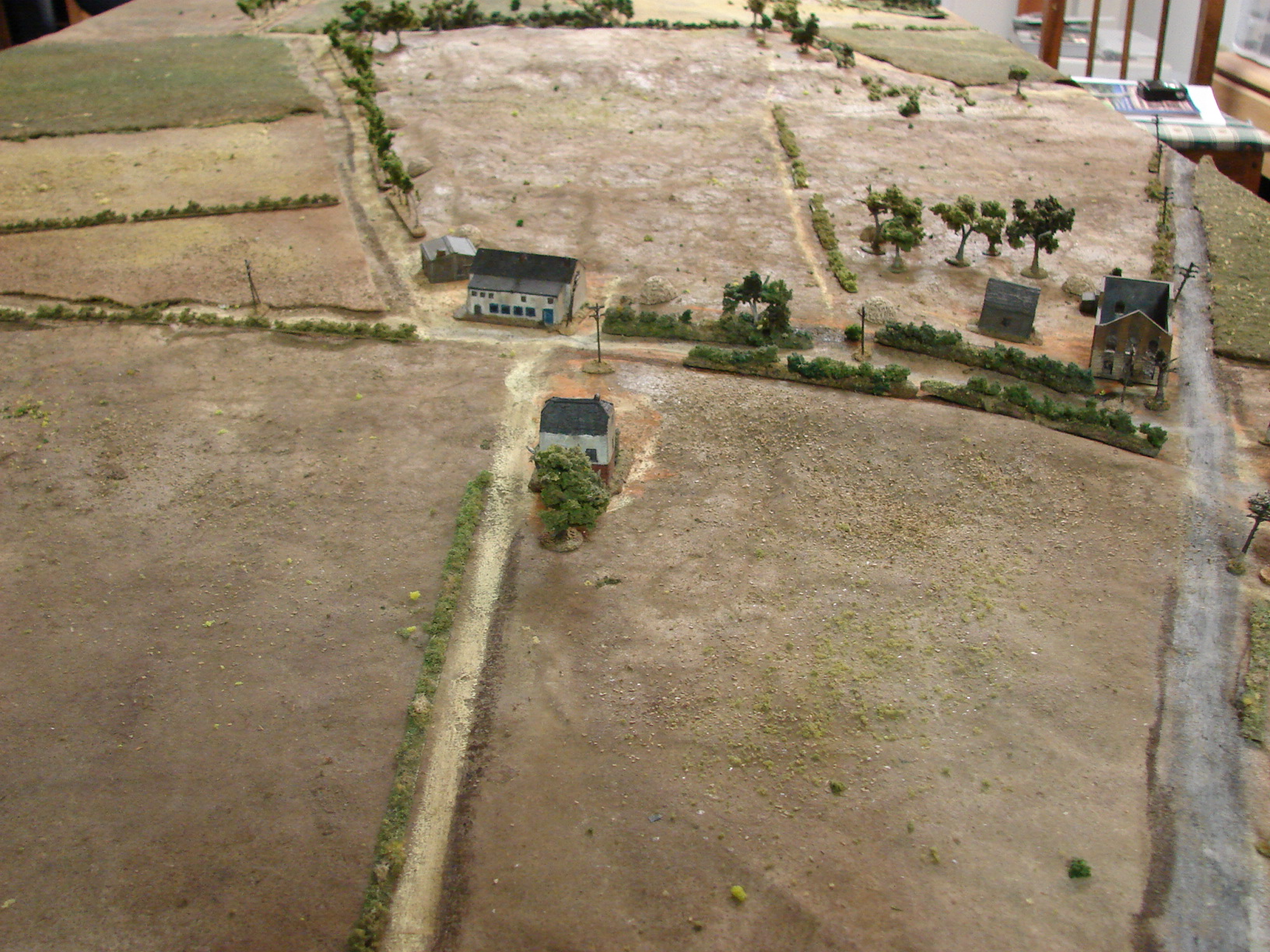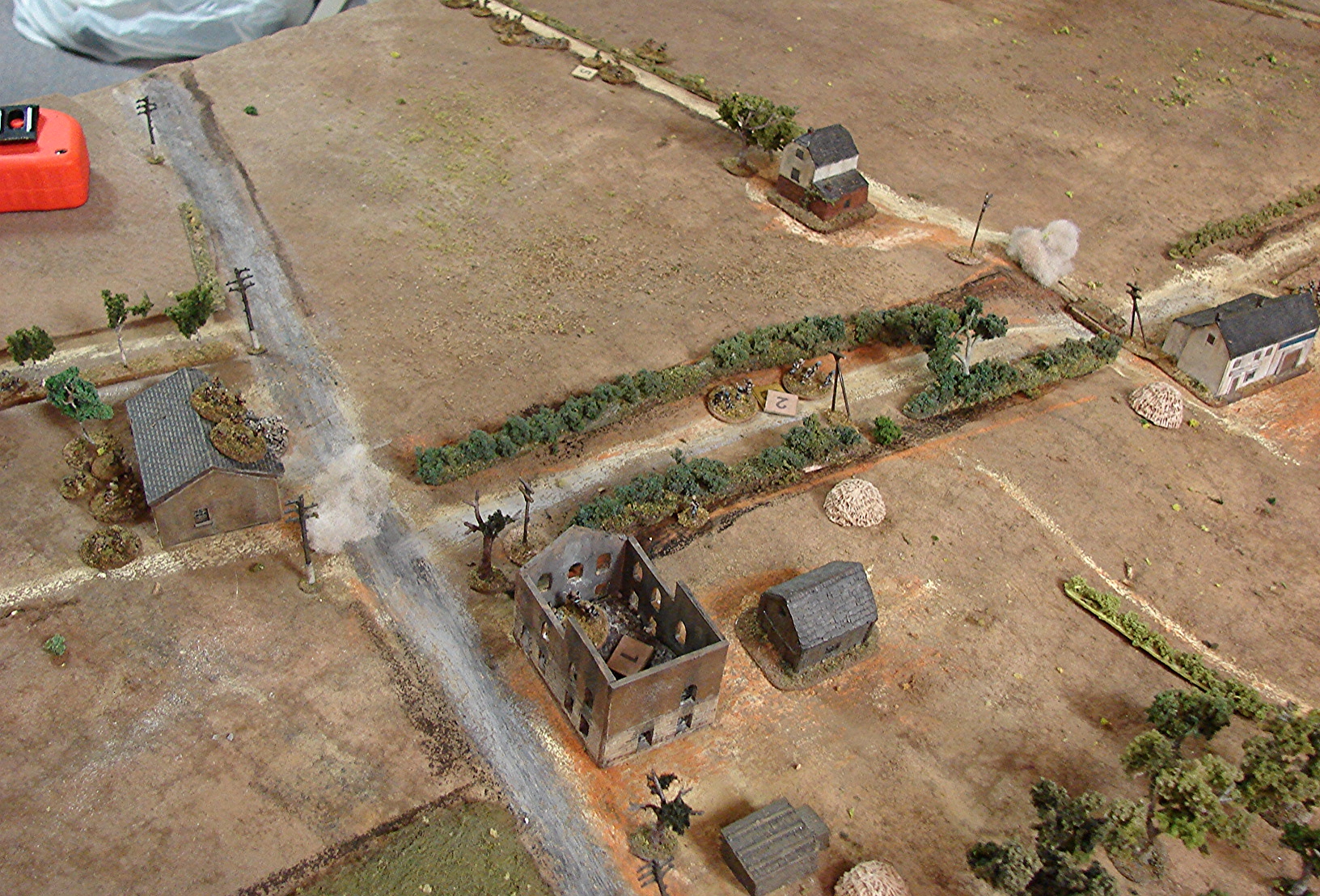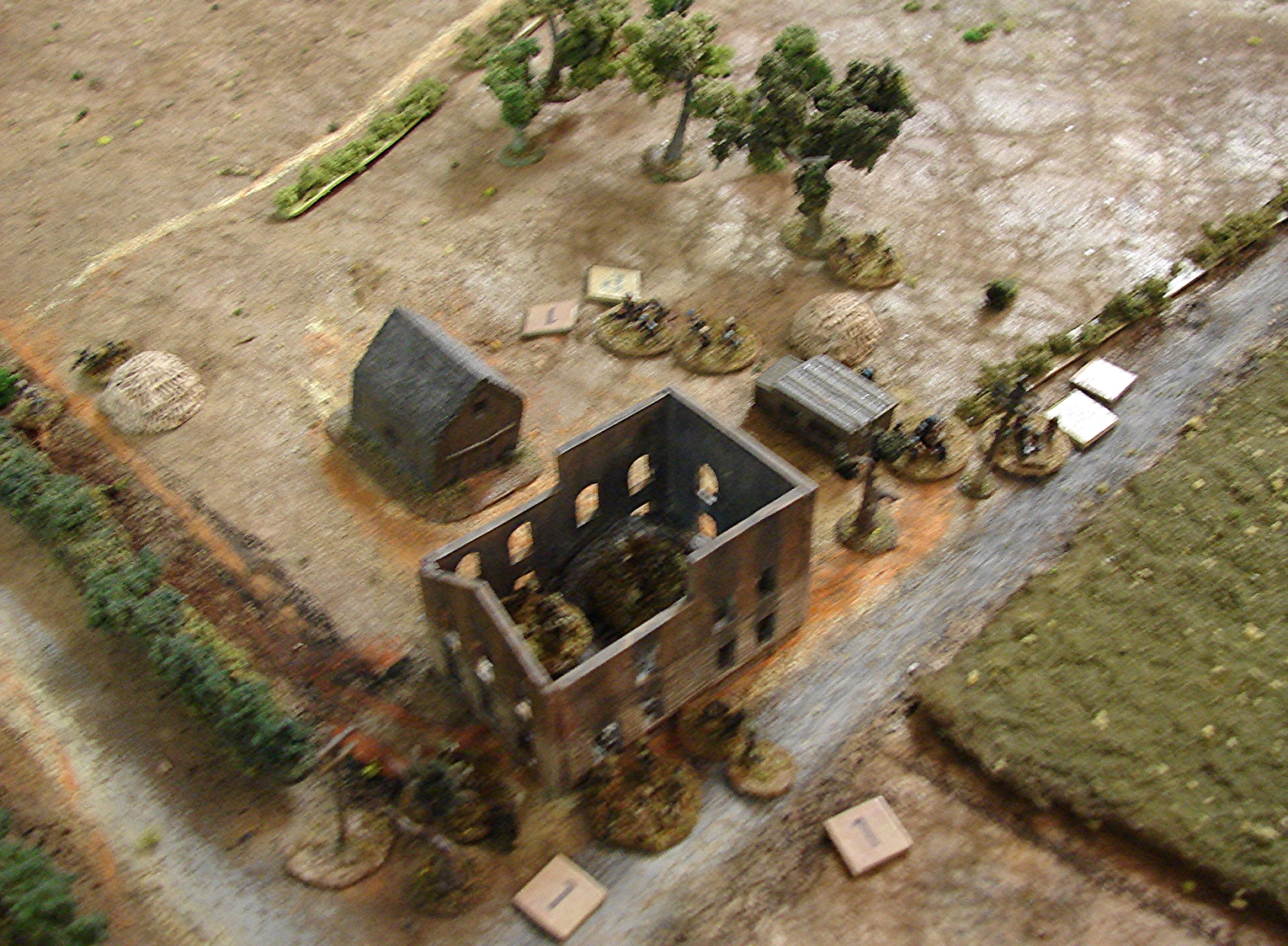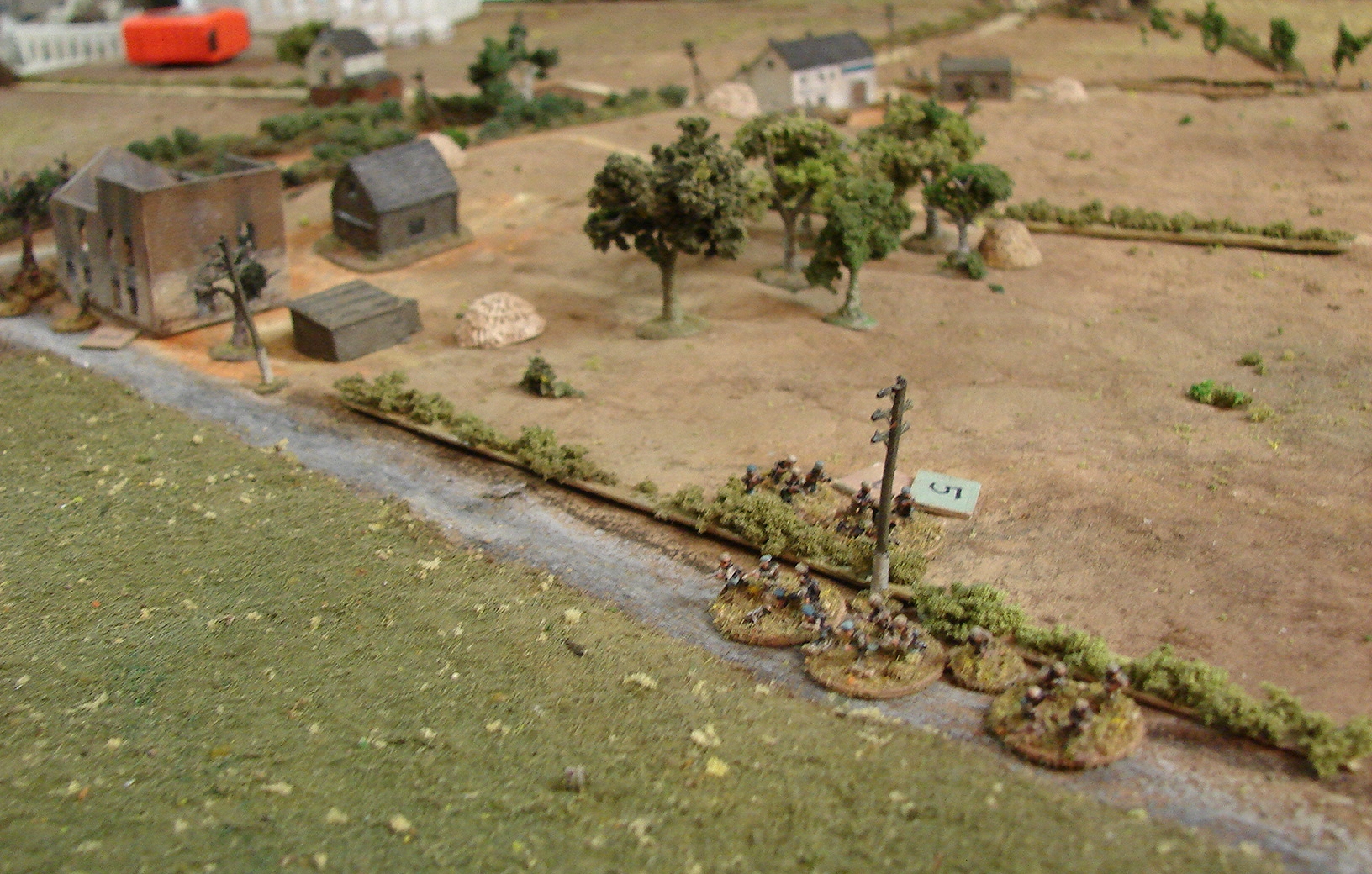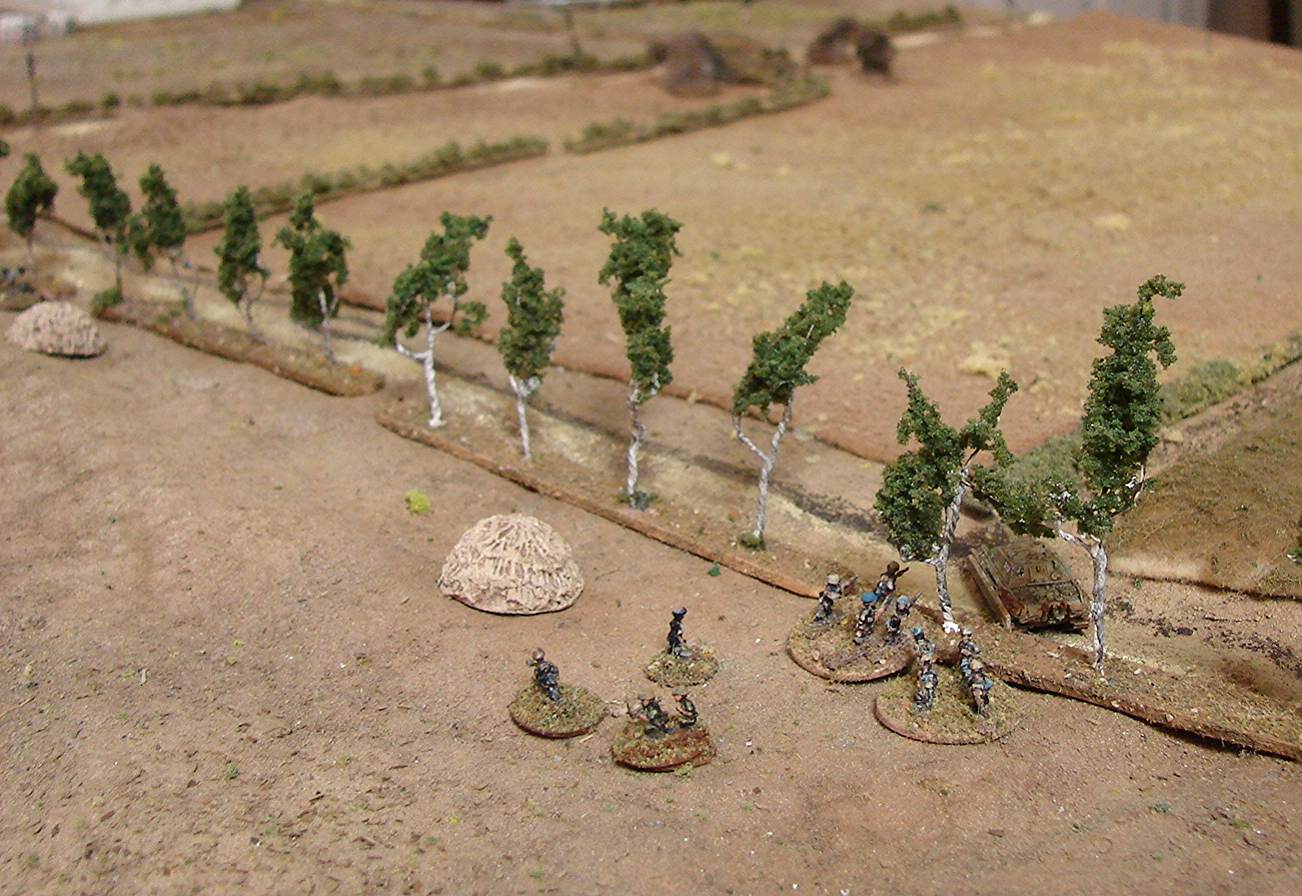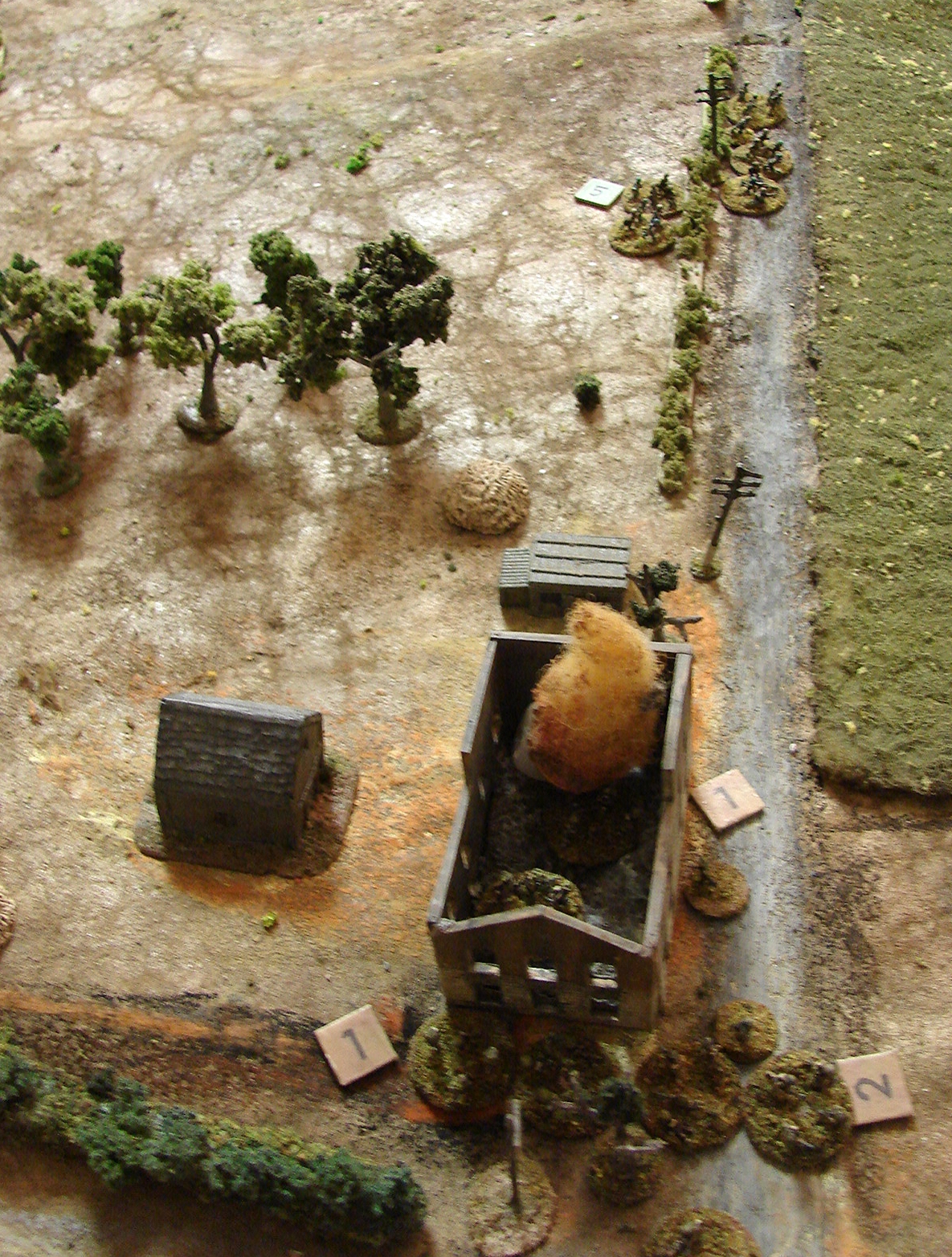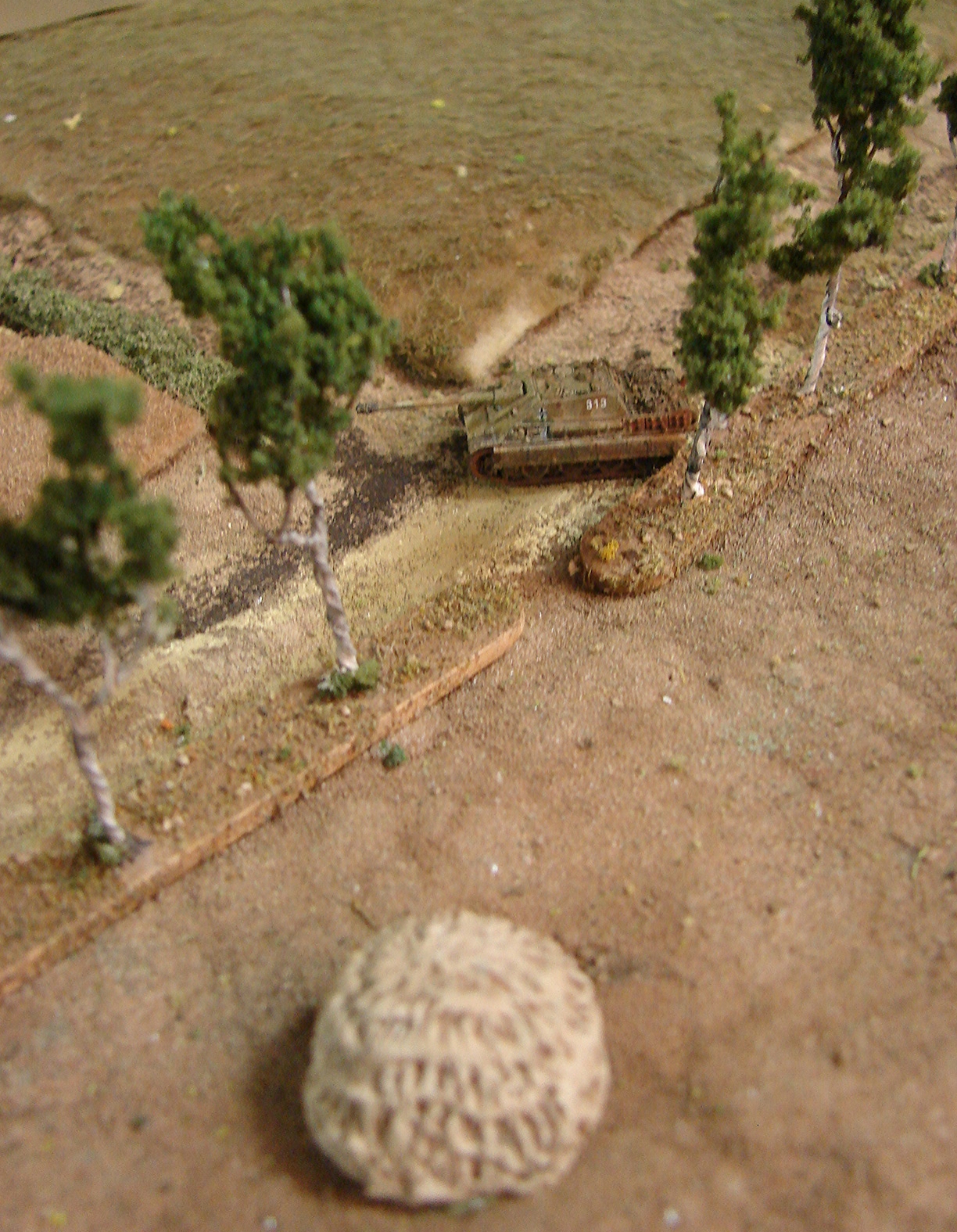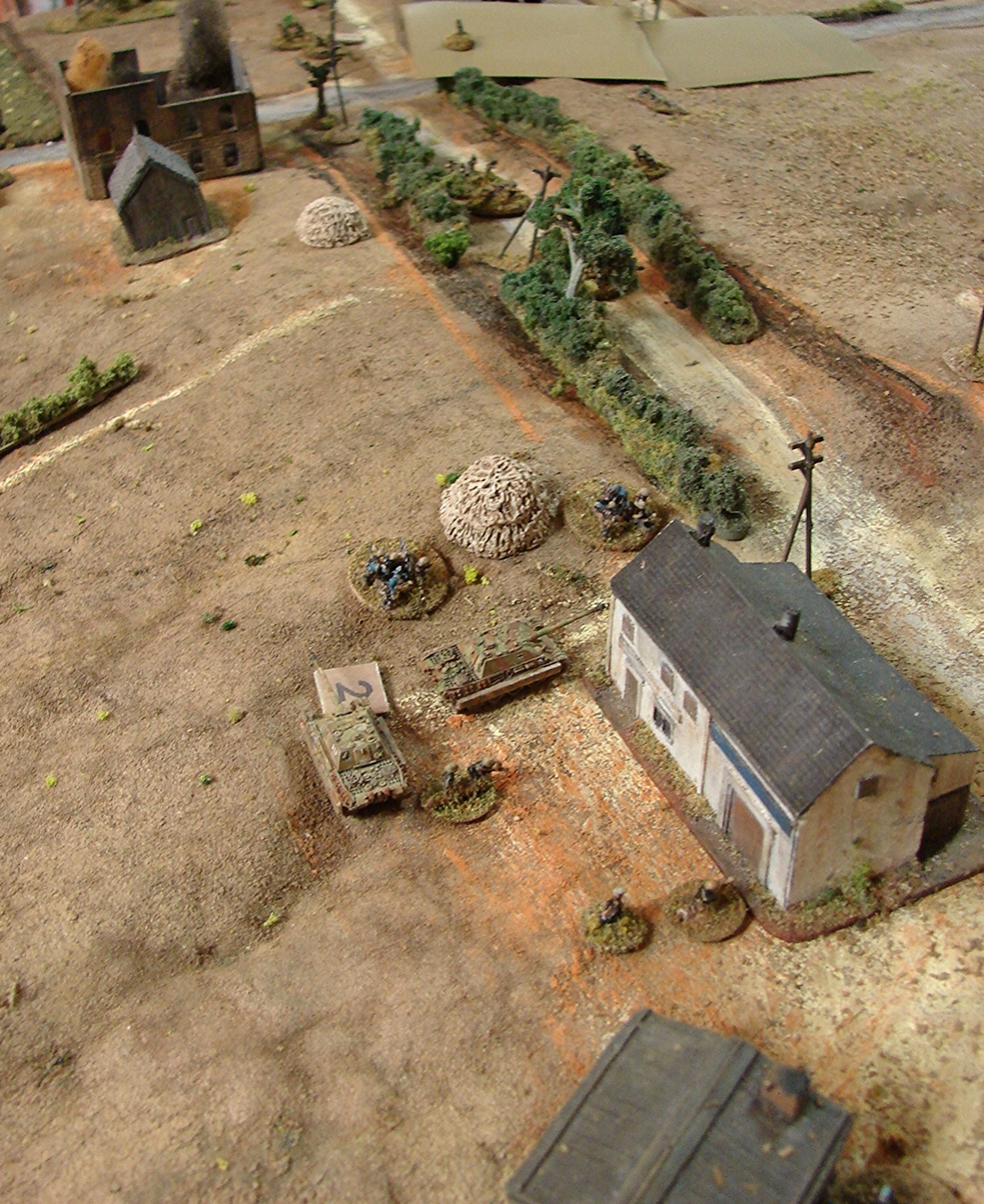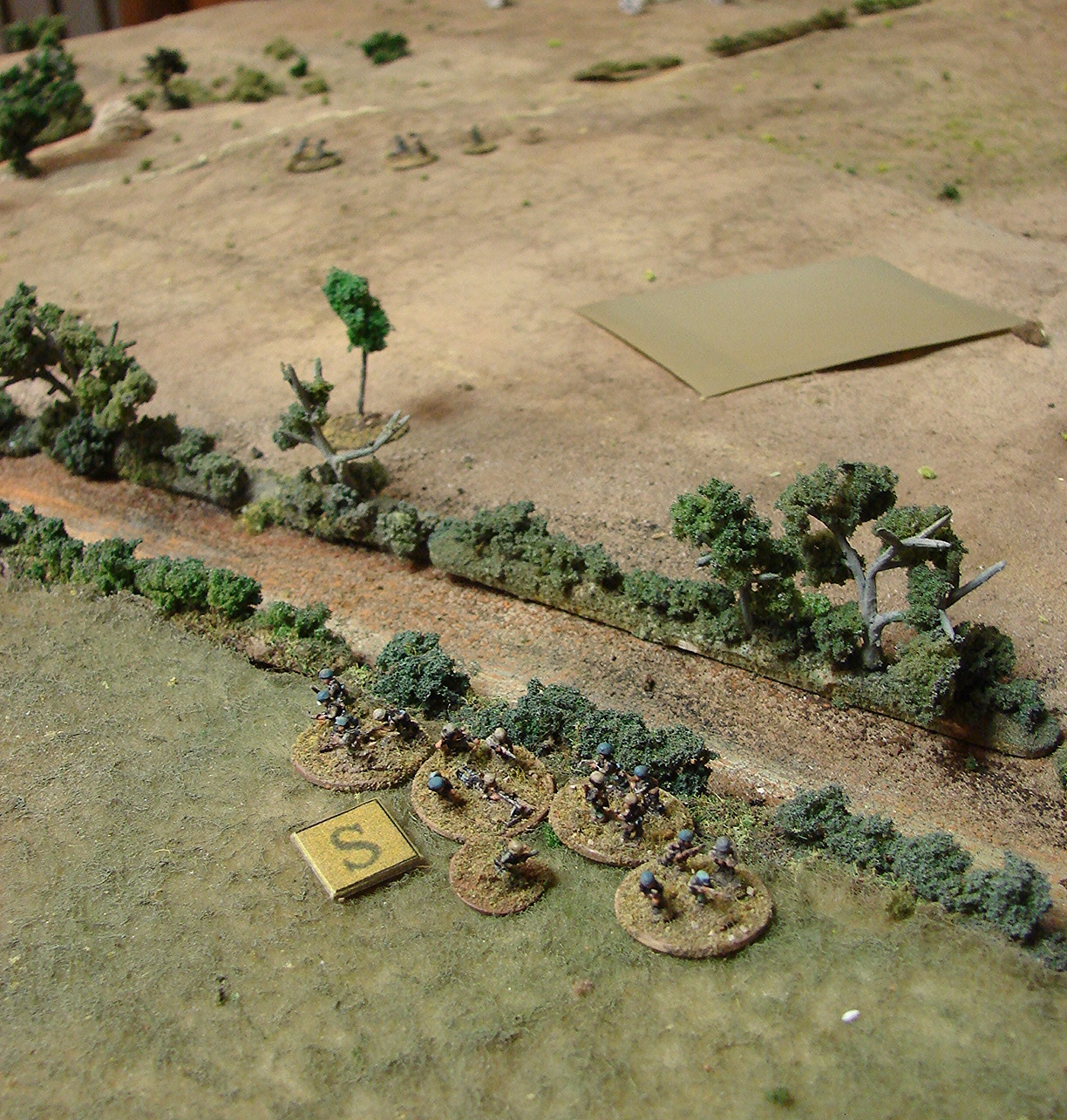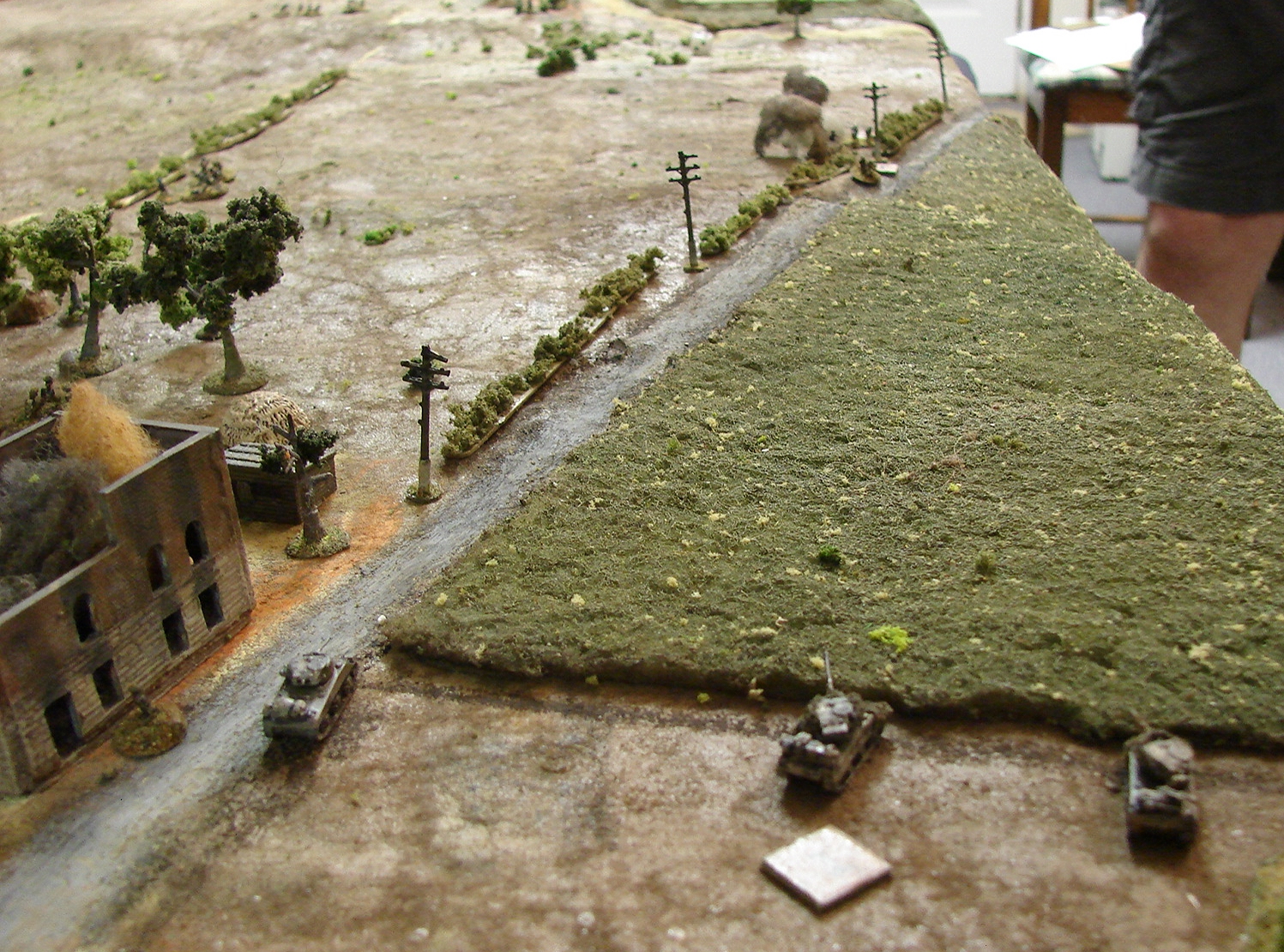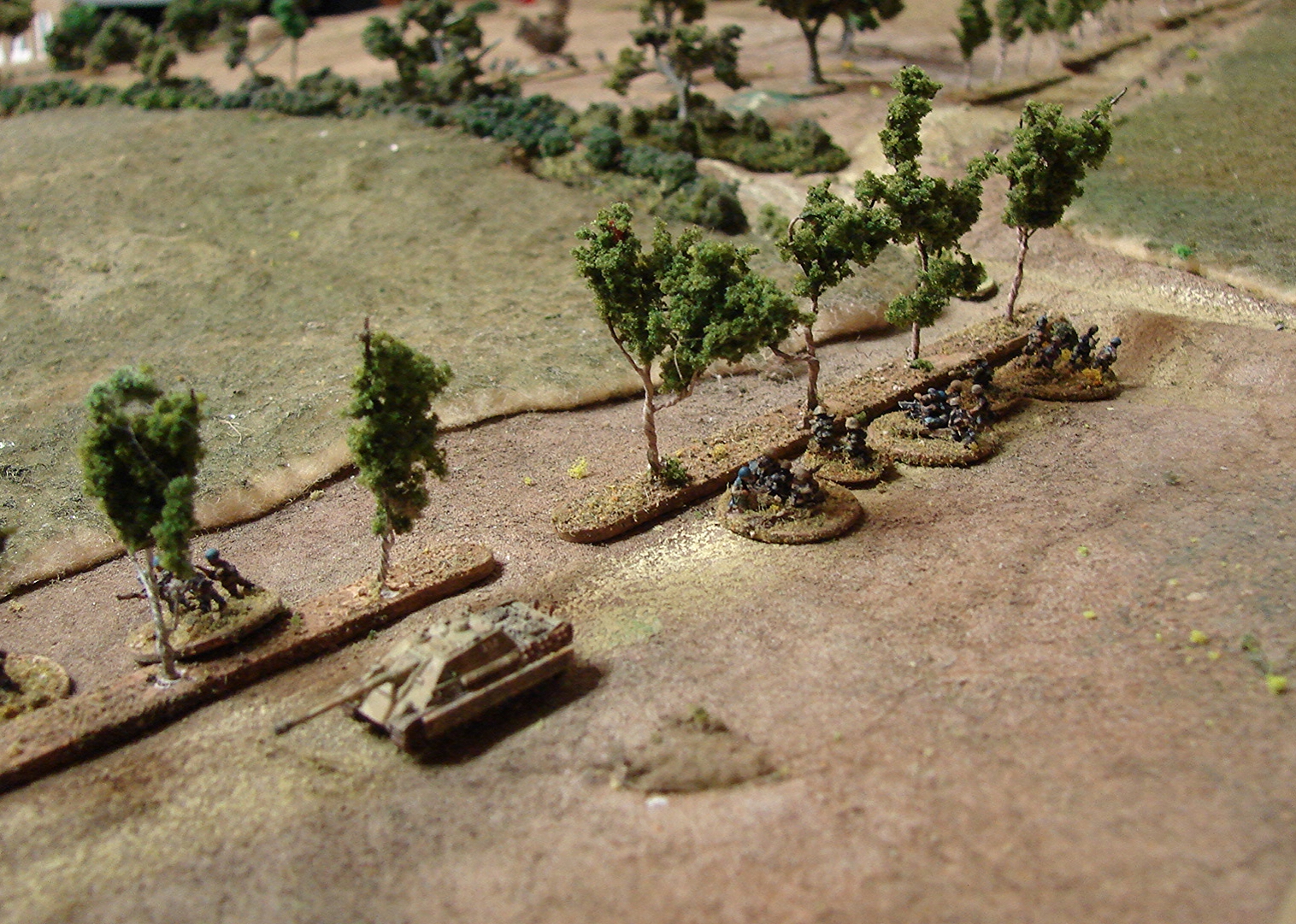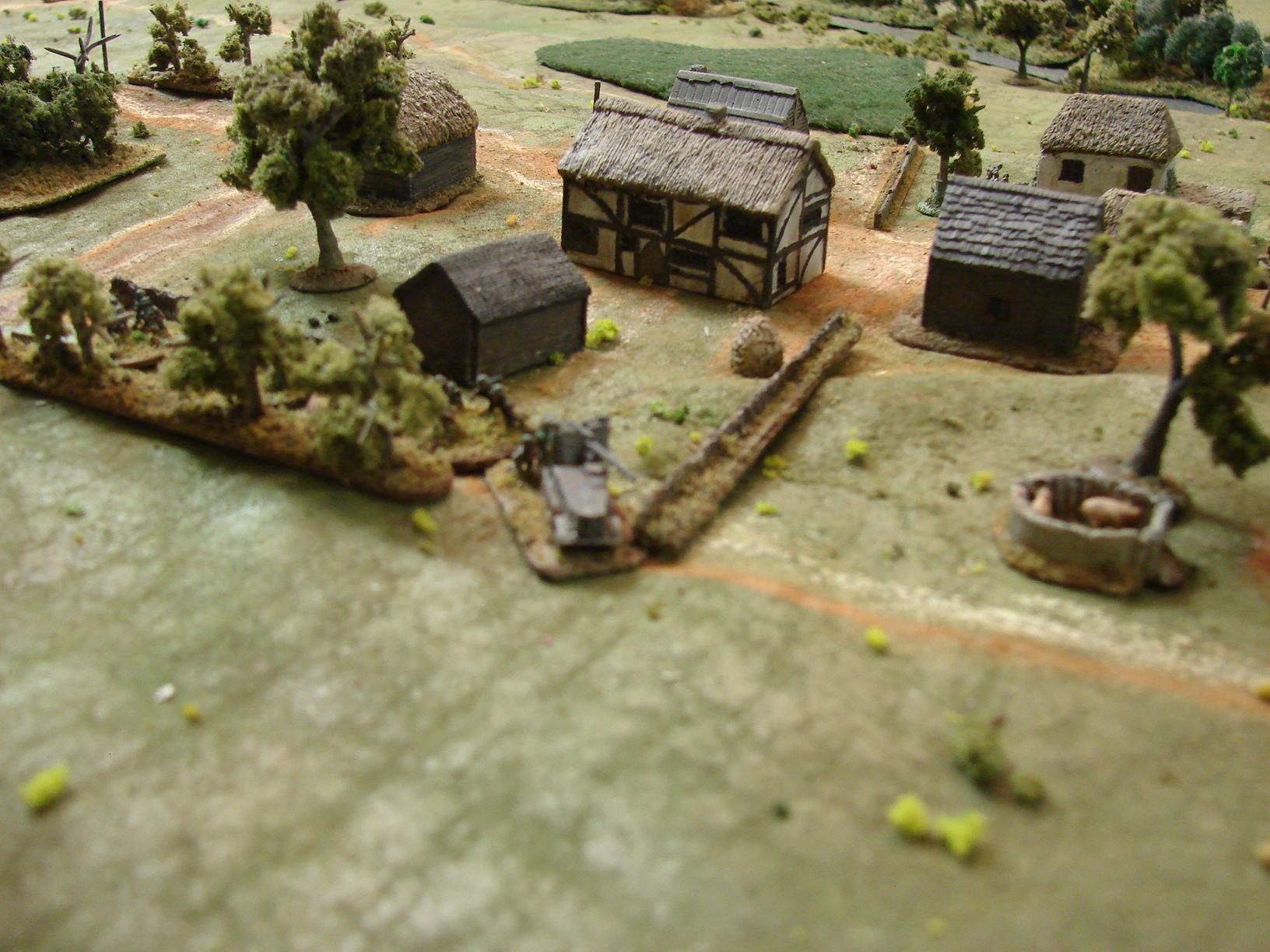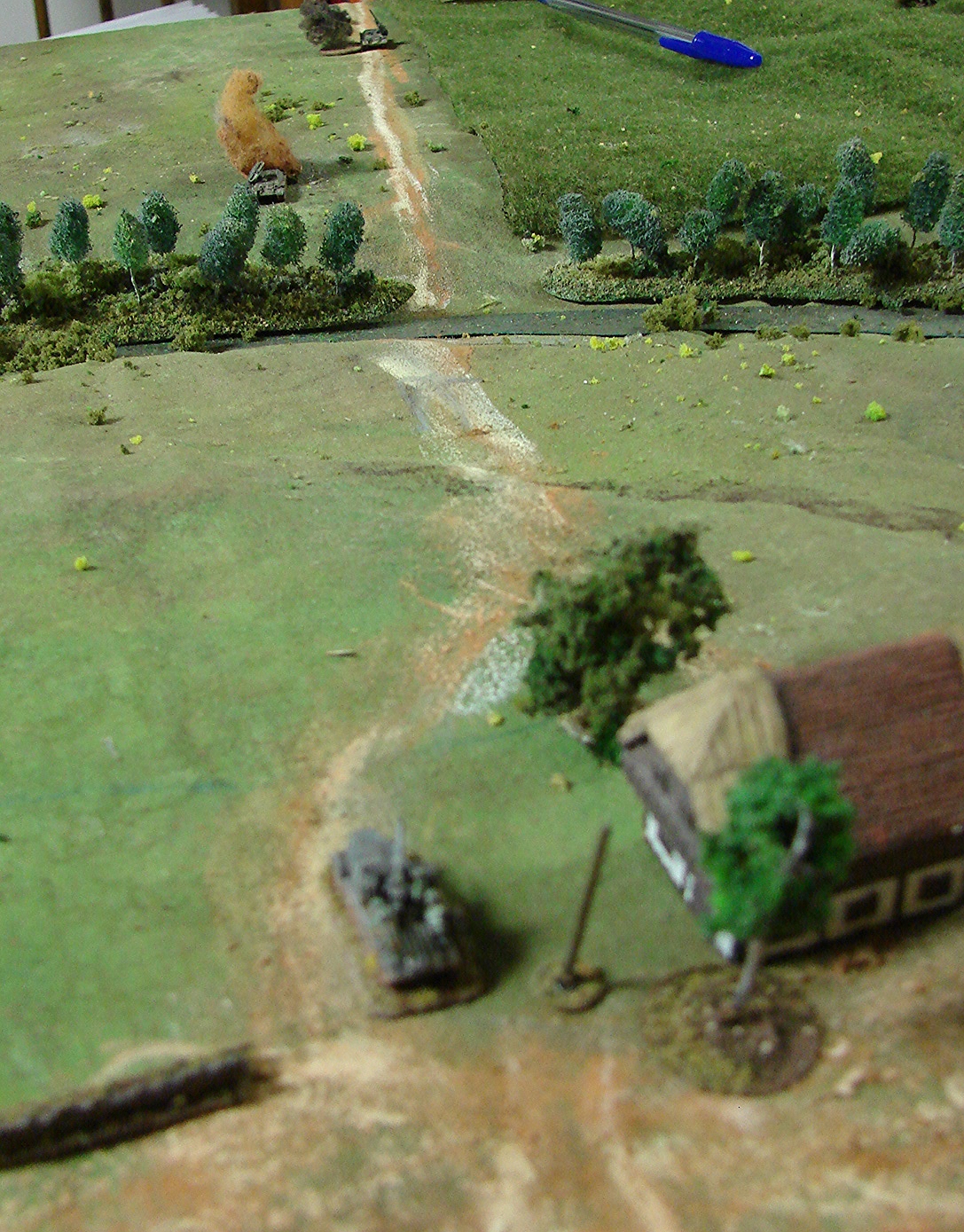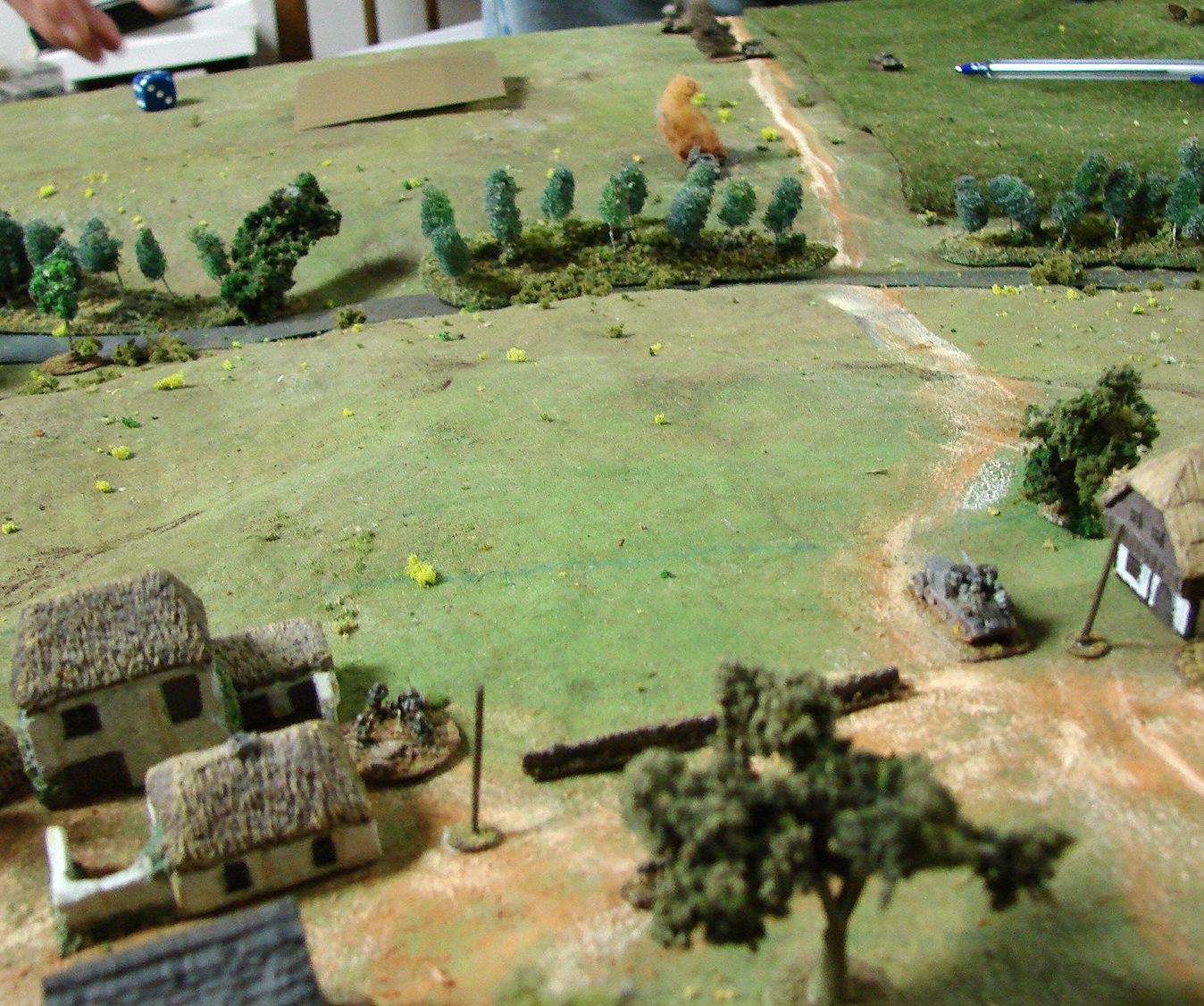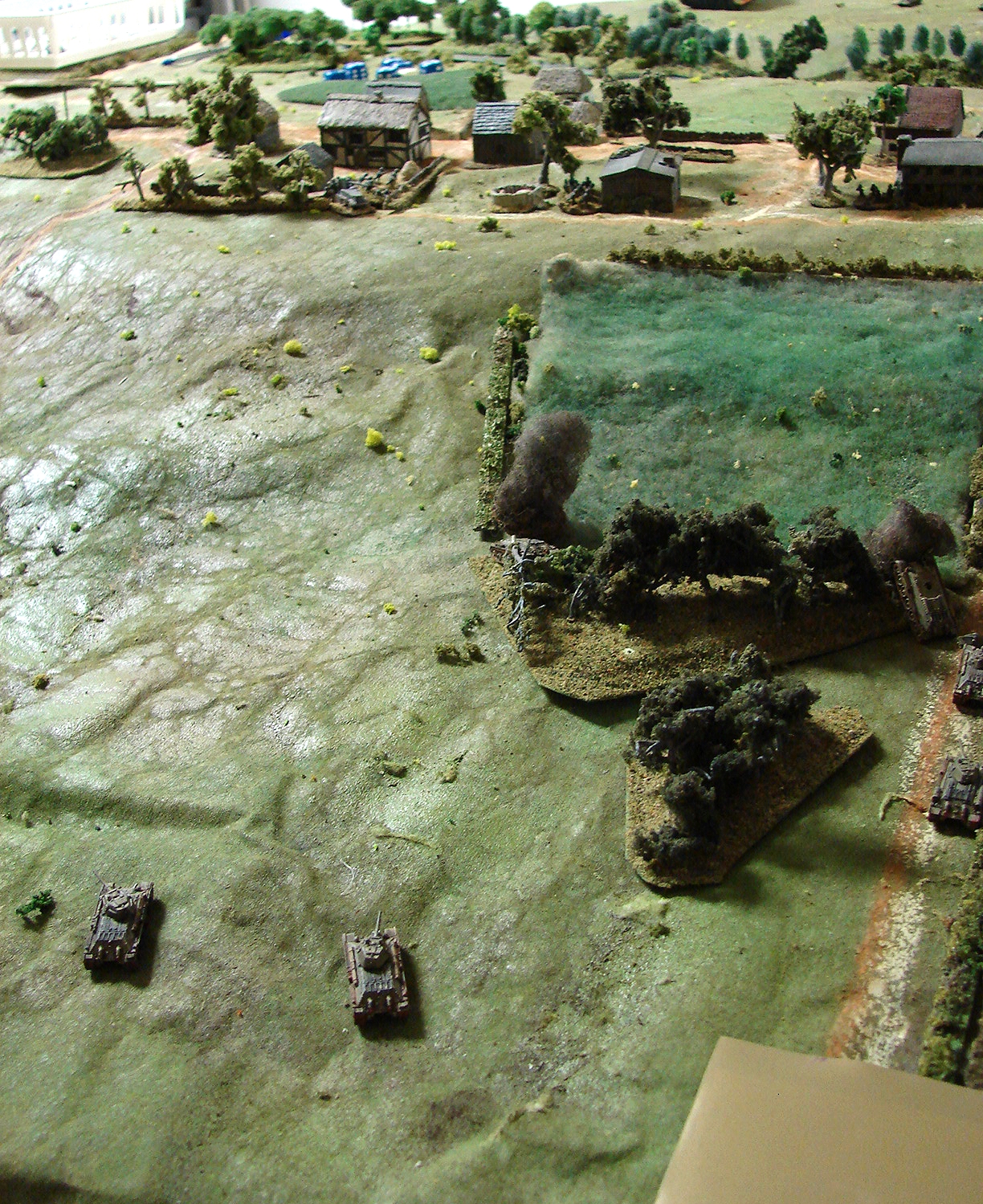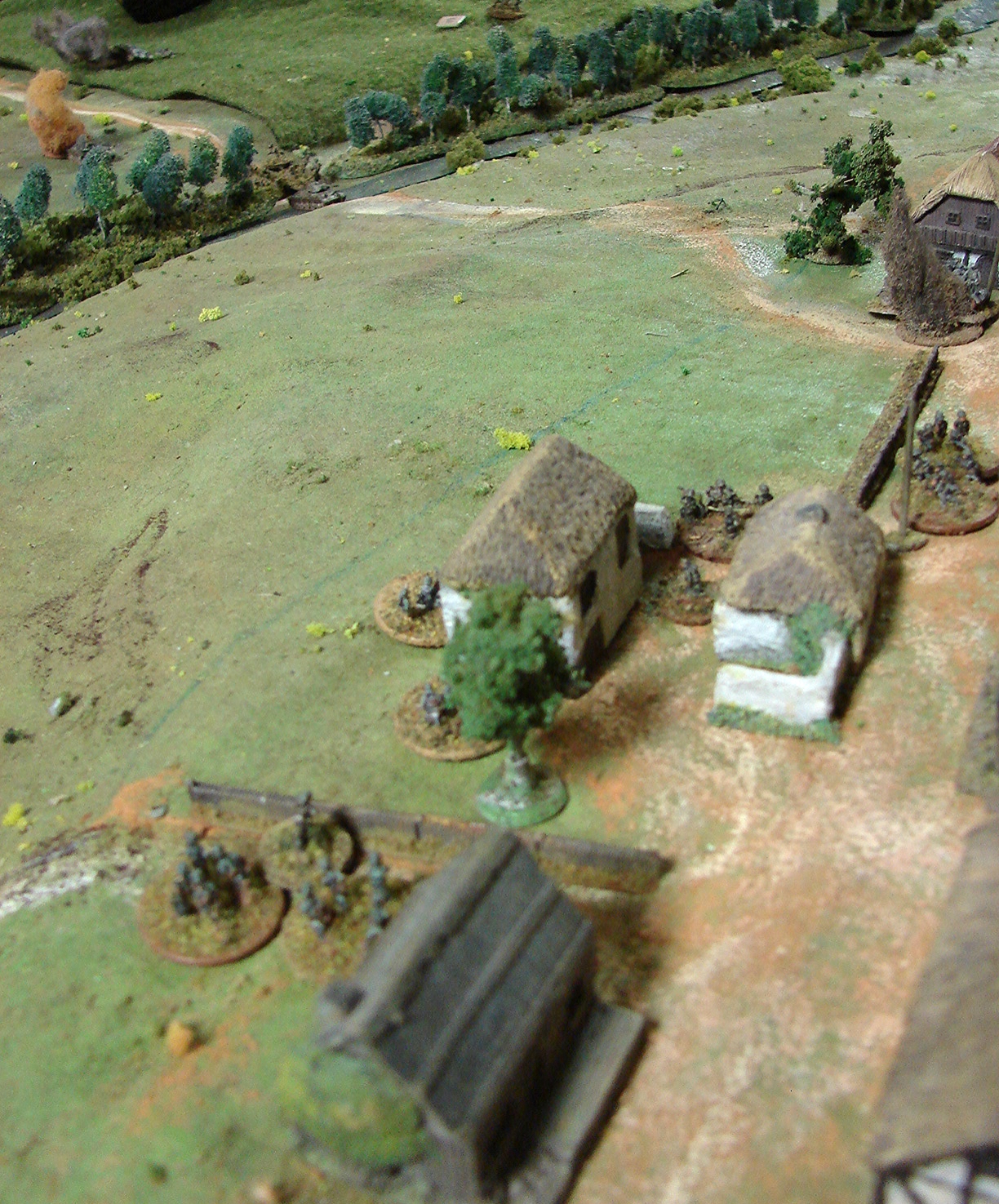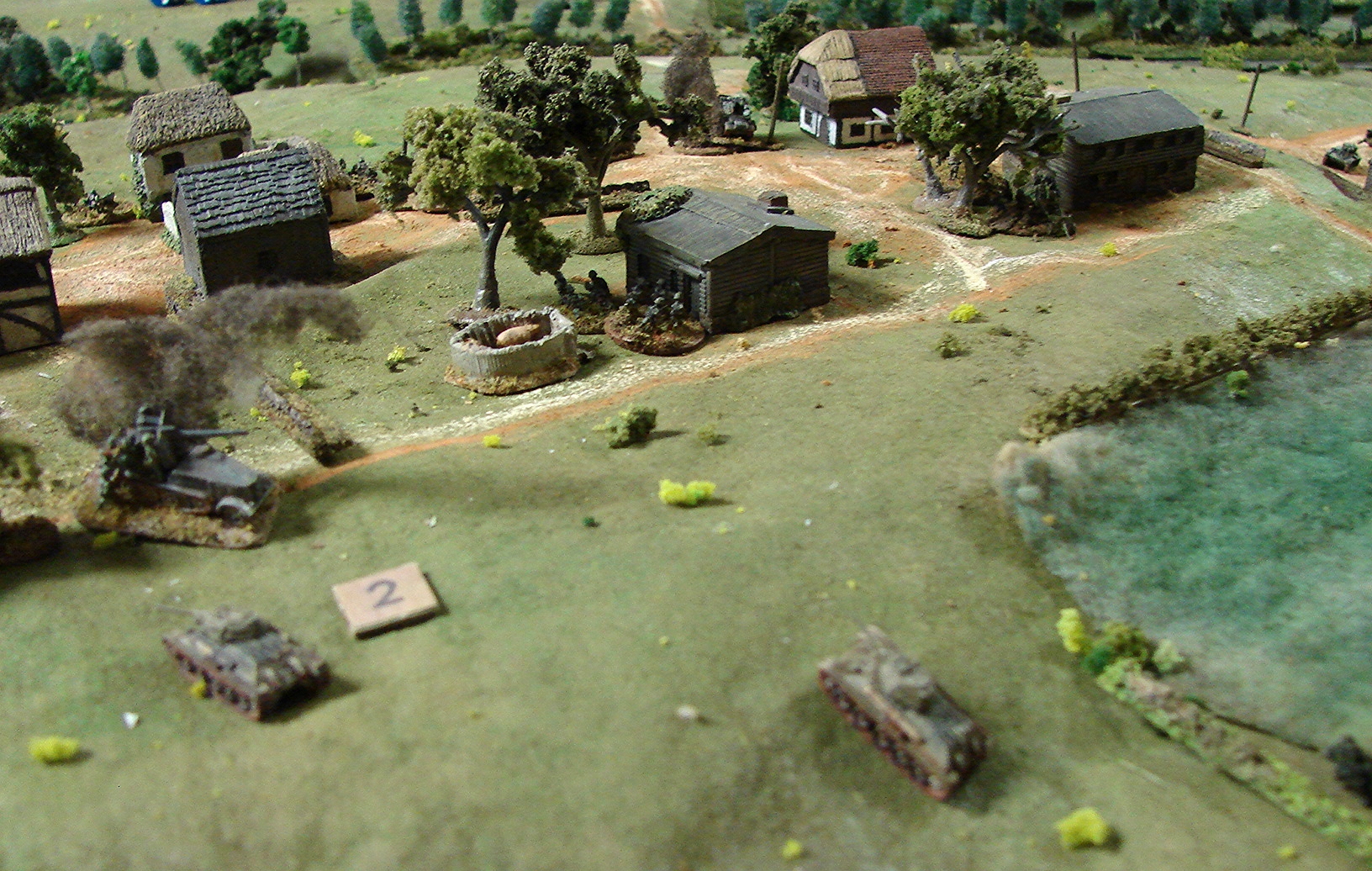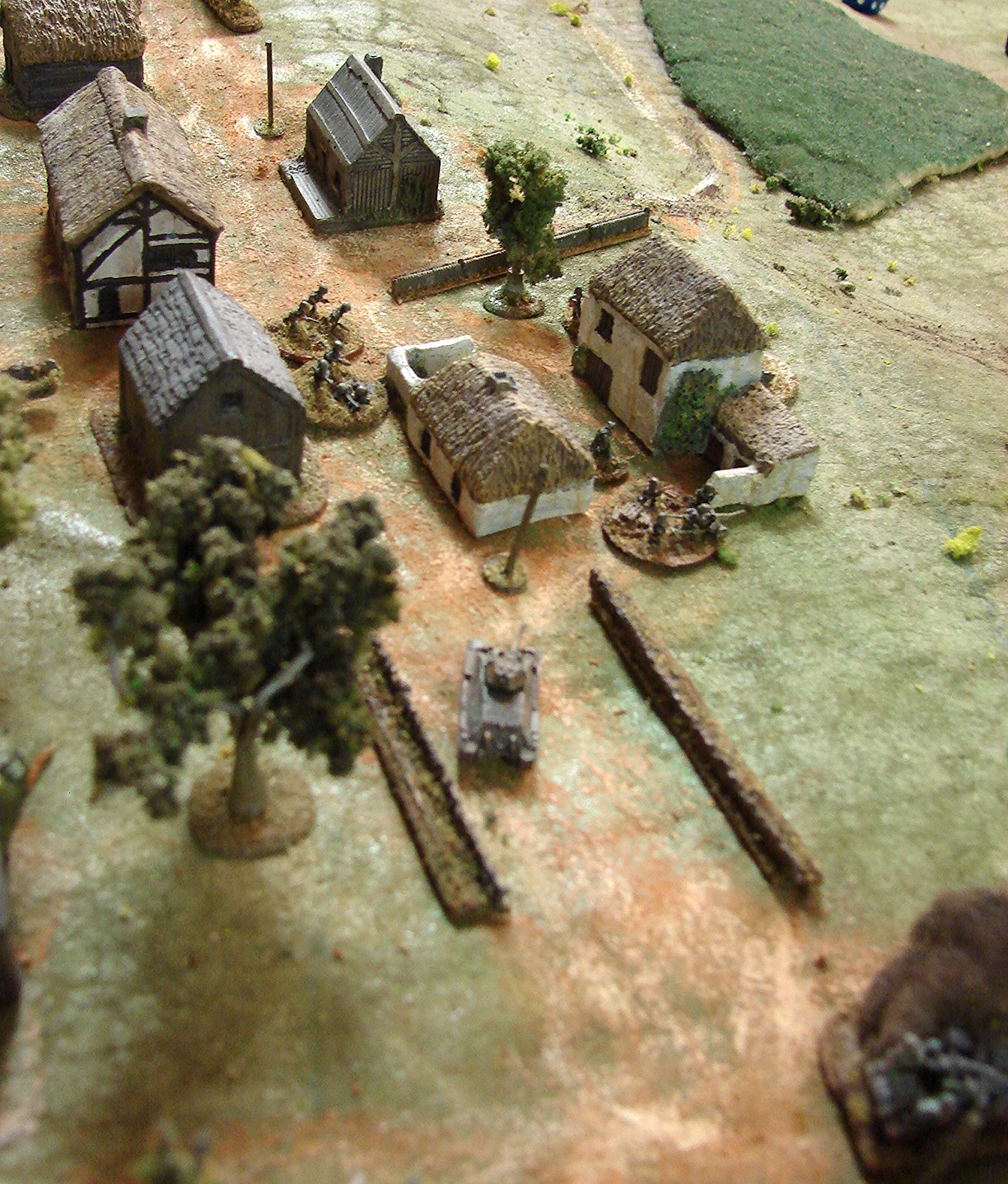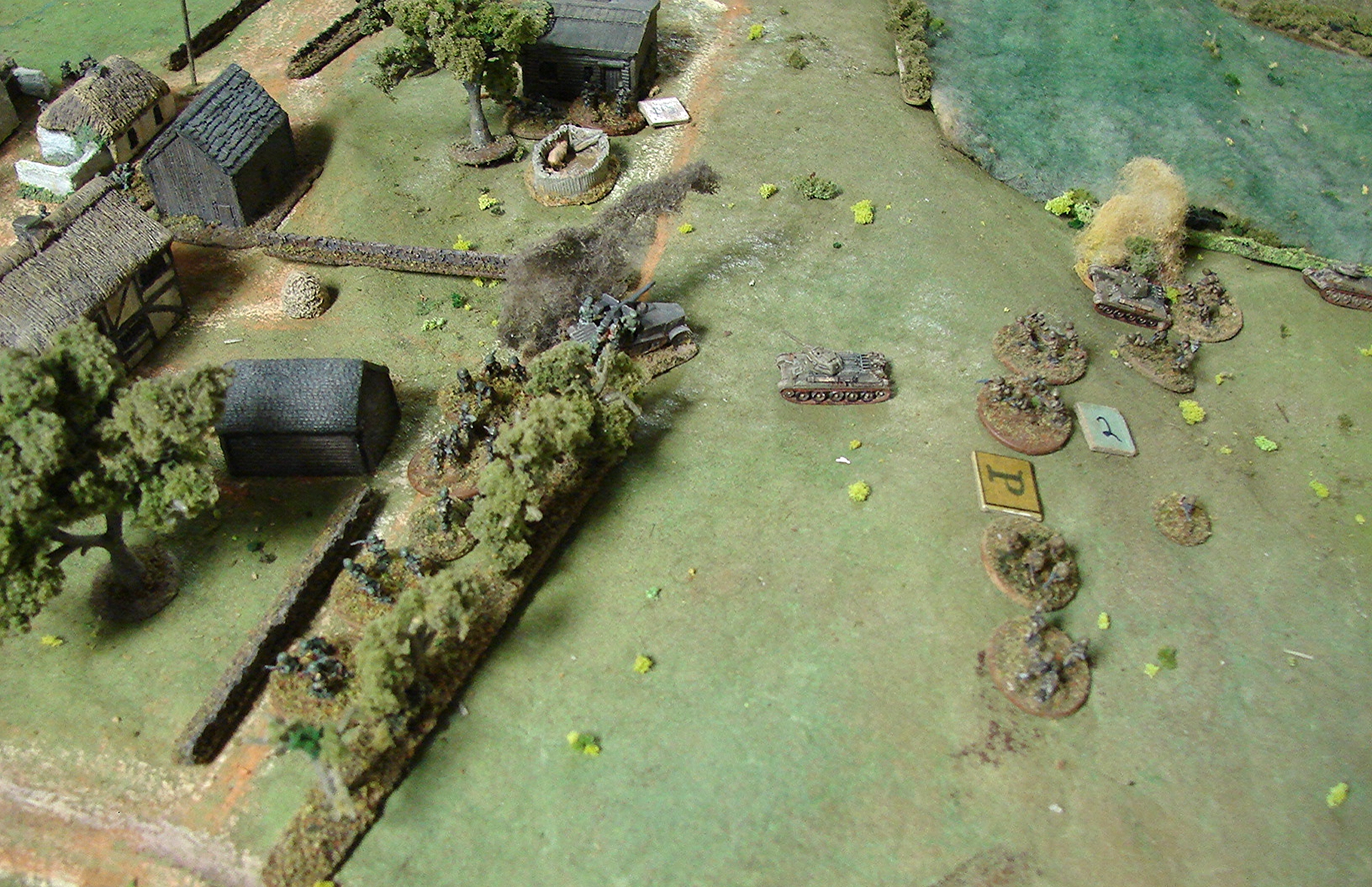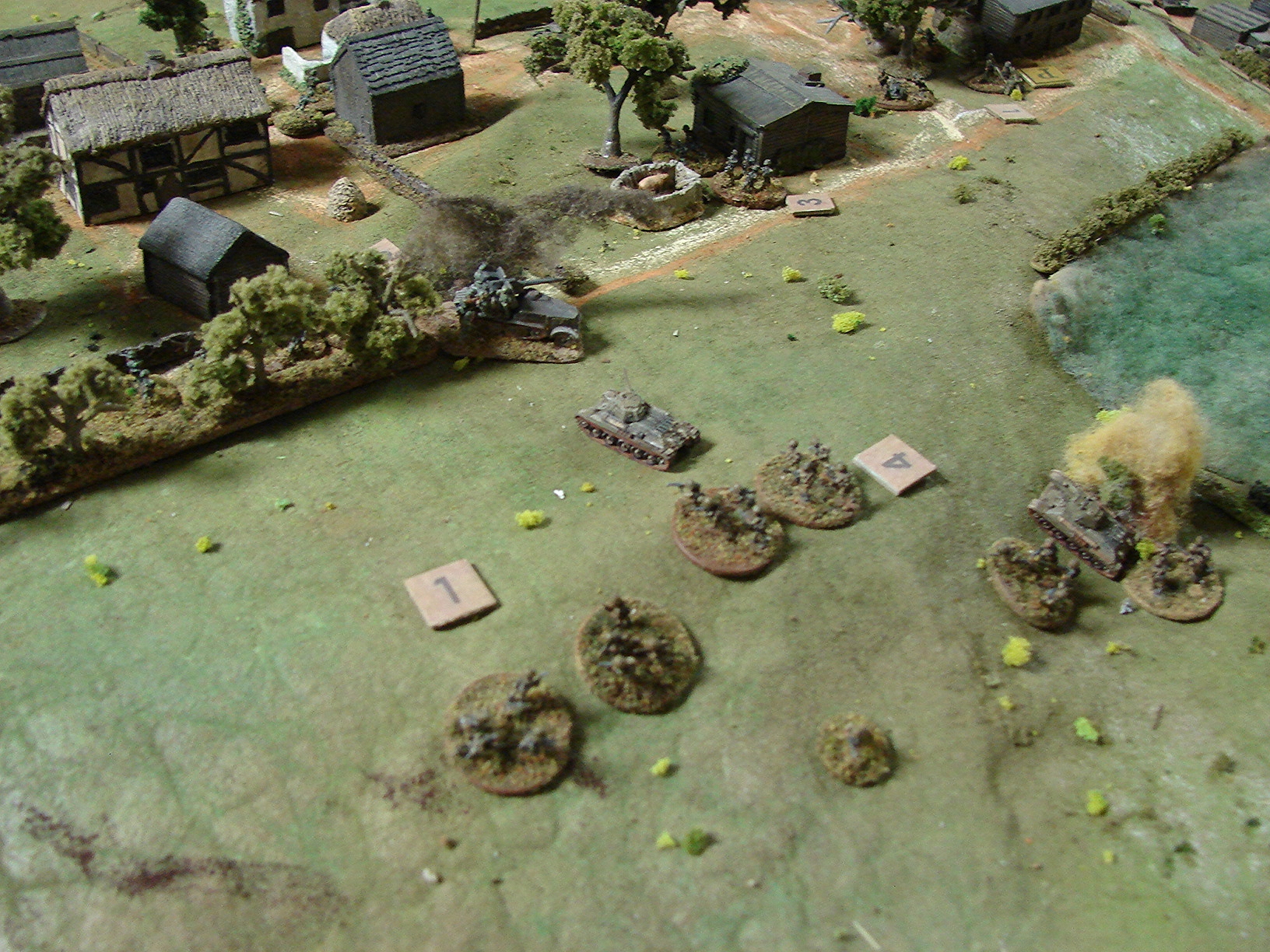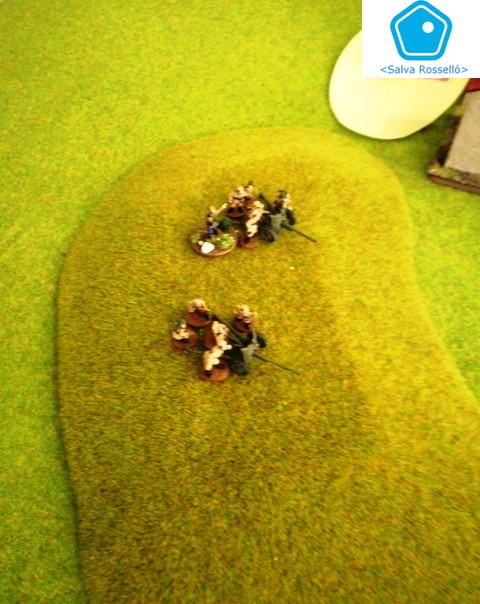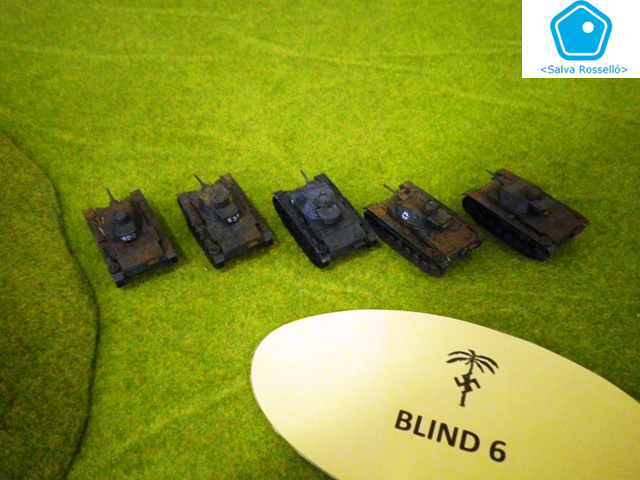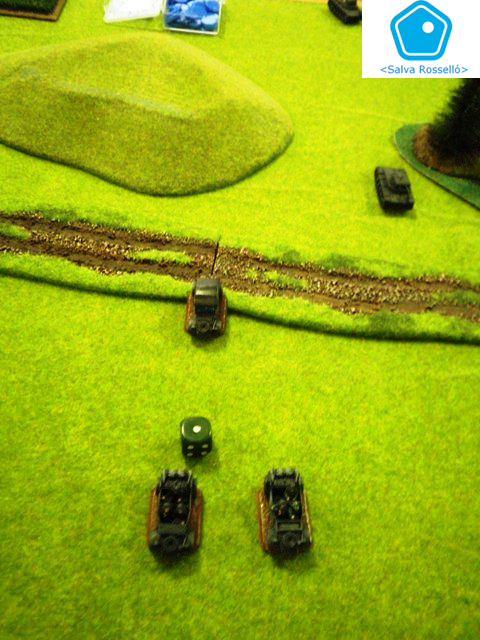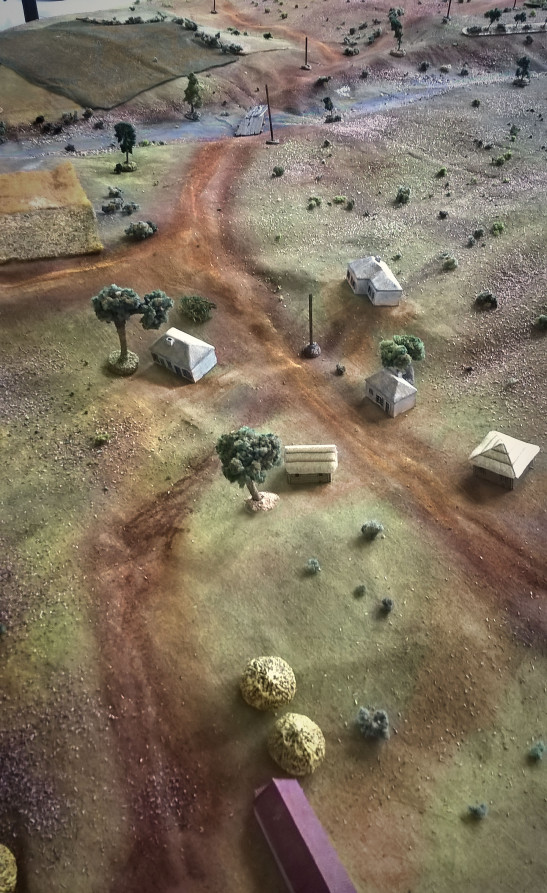This game was played out at Lincombe Barn on Sunday 2nd April. The Americans were commanded by Chris and I was leading the Germans.
The AAR covers a fictional scenario representing an action between American forces attempting to break out from the Cotentin peninsula and clear a path southwards towards St Lô and the German defenders attempts to contain them in the weeks immediately after the initial landings.
US Briefing
Capt. Travis Perkins, commanding A Company has been ordered to secure the road south from Ste Eulalie-en-Bocage to allow the passage of armour and guns towards the main objective south-east towards St Lô. The company has suffered some casualties since the landings at Utah Beach but morale is good.
The Weapons Platoon has been detached and is not available for this operation, however a single platoon of M4 tanks is available. These are fresh from training and have not seen combat previously. The armour has a morale level of 3 but from lack of combat experience have the potential to be cautious. To represent this the Hesitant card will be present in the game deck but will only affect the tanks on their next activation or on the next activation of the tank Big Man. The infantry will be unaffected by Hesitant.
All the American troops are rated as Regular.
The company consists of;
Company HQ
- Capt. Travis Perkins (L3 Big Man)
- Sgt (Enrico Fermi (L2 Big Man)
- 2 x .30mm MG teams (4 crew each)
- 1 x M3 halftrack with .30 MG and 2 crew
Platoon One
- Lt Ernie "Brick" Wall (L3 Big Man)
- 3 x rifle squads (10 men each)
- 1 x bazooka team (2 men)
Platoon Two
- Lt Roscoe P. Coltrane (L2 Big Man)
- 3 rifle squads (10 men each)
- 1 bazooka team (2 men)
Platoon Three
- Sgt Cooter Davenport (L2 Big Man)
- 3 x rifle squads (10 men each)
Tank platoon
- Lt Ricky Reeves (L2 Big Man)
- 5 x 75mm M4 Sherman tanks
The Americans have one dummy blind.
Before the Battle
Recce teams report that German troops are active in the area and that armour is likely to be present. The ground is flat but criss-crossed with bocage hedges. A shallow but wide drainage ditch runs alongside the main road for part of its length before turning off across a field which is muddy and counts as broken terrain. The ditch can be forded by infantry but should be counted as a major obstacle. There is a bridge over this ditch that is suitable for light vehicles only. Vehicles cannot cross the ditch. There are two lanes running at right angles from the main road. At the far end of the road there is a walled farm on some raised ground, with a couple of outbuildings, surrounded by an orchard enclosed by a fence. Northwards beyond the orchard is a field of corn.
The bocage hedges are a major obstacle and take one action for infantry to get through. Tanks will take one action to break through and count as broken terrain to cross once a breach has been made.
Capt. Perkins must secure the road by clearing any defenders from the area and take the farmhouse. However, the terrain is difficult and every hedge or obstacle should be treated as a potential hiding place for enemy troops.
German Briefing
It is imperative that the American advance towards St Lô is halted. Reconnaissance has indicated that the Americans intend to push down along this road to outflank our troops to the north-west of the town. Although our resources are stretched, Oberleutnant Hans Knopfel has been sent to guard the road with a weakened company of Panzergrenadiers. These are rated as Regular.
Oberleutnant Knopfel has also been provided with some armour, but not much, few vehicles can be spared. They are, however, rated as Veteran. Their commander Leutnant Heinz Scribner is a Tank Ace.
His forces consist of:
Company HQ
- Oberleutnant Hans Knopfel (L4 Big Man)
- Obergefreiter Stefan Schtupp (L1 Big Man)
- 4 x MG42 MG teams (2 men each)
- 2 x Panzerschreck teams (2 men each)
- 1 x SdKfz 250/9 with 2cm cannon and MG42
- 1 x SdKfz 251 with MG42 and 2 crew
Zug One
- Feldwebel Ewald Schmidt (L3 Big Man)
- 3 x rifle squads (8 men each)
- 2 x Panzerfausts
Zug Two
- Unterfeldwebel Fritz Blick (L2 Big Man)
- 3 x rifle squads (8 men each)
- 1 x Panzerfaust
Panzer Zug
- Leutnant Heinz Scribner (L3 Big Man)
- 3 x Stug III Ausf. G 75mm
- 1 x PzKfw IV Ausf. H 75mm
The Germans have two dummy blinds.
Oberleutnant Knopfel's orders are to prevent the Americans from advancing down the road and to cause maximum casualties.
The Game
The game opened with the Americans advancing through the bocage under blinds. Because of the nature of the terrain attempts at spotting were difficult. The non-arrival of the German Blinds chip didn't help matters much either.
Before long, American M4 tanks had crashed through the bocage (presumably aided by Culin Hedgecutters, and were confronted by a single Zug of Panzergrenadiers. Despite the explosion of one tank from a short range hit from a Panzerfaust, the M4s opened up with a devastating salvo of HE shells which soon caused significant casualties and much shock, suppressing the German troops and soon forcing the survivors to withdraw.
US Tanks Attack the panzergrenadiers
HE Fire decimates the first zug
At the same time, US infantry began to advance across the ploughed fields, to be met with a devastating hail of fire from MG42s in the roof of the farmhouse and also closer along the fence around the orchard.
It all seems to be going the american way
Unfortunately for the Germans, the German Blinds chip (also the chips for the German armour and second Panzergrenadier Zug) refused to emerge from the bag for a number of rounds. Only the endless rain of bullets from the MG42s was keeping the Americans pinned, together with the Hesitant chip preventing the tanks from advancing any further. Finally, in a bloody bout of close combat around the fence, the German defenders were eliminated. However, more MG42 fire from the farm forced the Americans to withdraw in shock with heavy losses. All this time Capt. Perkins and the third American platoon remained behind the bocage, seemingly unwilling to advance into the cauldron of fire.
German Armour and more panzxergrendiers arrive
Eventually though, the Germans to the west of the main road started to move and soon the accurate 75mm fire of the veteran Panzer troops started to knock out the US M4s.
The arrival of fresh German infantry and the loss of their supporting armour seemed to cause a weakening of resolve among the previously confident Amis.
The Shermans take heavy losses from accurate German shooting
The tide turns as the american start to pull out
With Panzerschreck teams making their way through the orchard and a devastating series of bursts of MG fire from both the farmhouse and the advancing PzKfw IV, the remaining Americans realised that the tide had turned and began to pull back, leaving many dead and three brewed-up tanks behind.
The final position before the US retreat
So, a pretty tense and exciting encounter. From a German perspective, the early stages of the battle were dismal, mainly because of the non-appearance of most German chips from the bag. In fact, the chip for the L4 Big Man, Oberleutnant Hans Knopfel didn't come out at all (neither did that for his US counterpart Capt. Travis Perkins either), but the German L1 Big Man, Obergefreiter Stefan Schtupp's chip emerged frequently enough for him to activate the MG42s in the farmhouse, which pretty much stopped the US advance until the Panzers and the second Zug of Panzergrenadiers finally got moving. From that point on, the balance shifted decisively towards the defenders and the Americans pretty much had to retreat.
Carole






